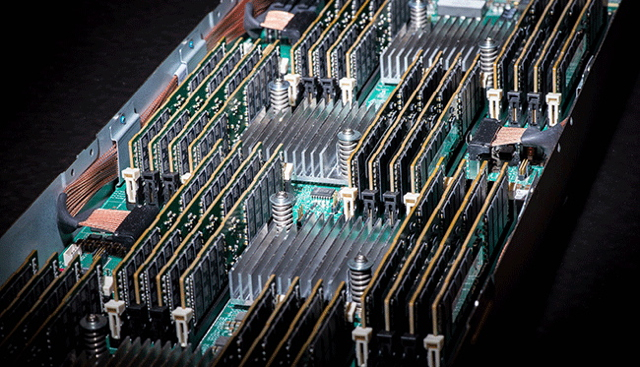In an experiment described in Science, Chinese researchers used photons (also known as light particles) from the country’s quantum-communications satellite and established an instantaneous connection between two ground stations more than 744 miles apart. By doing so, say the experts, China is now a pioneer in harnessing matter and energy at a subatomic level — and a leader in the field of using quantum technology to build a global communications network that can’t be hacked. Meanwhile, the U.S. Department of Energy is paying for companies to develop new supercomputers in pursuit of at least one “exascale” system.
The Wall Street Journal reports that, although China is “years away from being able to build” such a network, if it “ultimately succeeds, such a system could undermine U.S. advantages in penetrating computer networks.”
Even the Pentagon, in its annual report on China’s military, described the quantum satellite launch as a “notable advance in cryptography research.” The U.S. has put more emphasis on researching quantum computing, although it is also working on quantum communications.
According to Washington think tank New America fellow John Costello, who specializes in China and cybersecurity, Edward Snowden’s revelations that the U.S. spies on Chinese networks “undoubtedly played a part in the drive towards quantum technologies, as it revealed the degree of sophisticated threat Chinese counterespionage and cyberdefenses were facing.”
Oxford University professor in quantum physics and cryptography Artur Ekert calls the Chinese experiment “quite a remarkable technological achievement,” and University of Vienna physicist Anton Zeilinger, who is working with Chinese researchers on another experiment with the satellite, said the result had exceeded his expectations.
Elsewhere, WSJ reports that the U.S. Department of Energy is awarding $258 million to six companies to develop new supercomputers that “can crunch data at least 50 times faster than the nation’s most powerful systems today.” Advanced Micro Devices, Cray, Hewlett Packard Enterprise, IBM, Intel and Nvidia will share the investment in an effort to stay ahead in what Hyperion Research executive Steve Conway calls a “horse race” between the U.S. and China, the European Union and Japan “as they attempt to outdo one another in processing power.”
At the moment, the fastest computer is the Cray Titan, which “can handle 17,590 trillion calculations per second, or the rough equivalent of 11.6 million iPad Pros running at the same time.” Oak Ridge National Laboratory purchased the Titan for about $97 million.
The goal is to deliver at least one “exascale” system, which performs one quintillion — a billion billion — calculations per second, by 2021. China has said it will deliver its first exascale system by 2020; both countries hope to “deliver production-ready systems” that perform at exascale speeds by 2023.
The DOE funding is specifically earmarked for exascale computers. HPE demonstrated The Machine, a prototype that it plans to further develop. According to Hyperion Research, the cost of researching, developing and buying a U.S. exascale system “will total about $300 million to $500 million per system.” The U.S. government is typically the first buyer for these systems.


No Comments Yet
You can be the first to comment!
Sorry, comments for this entry are closed at this time.